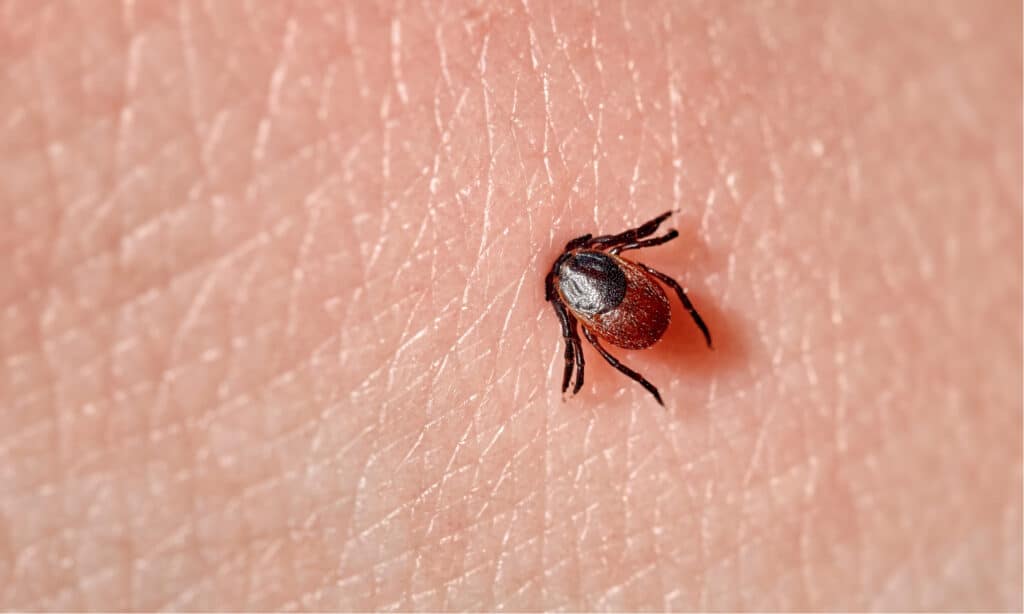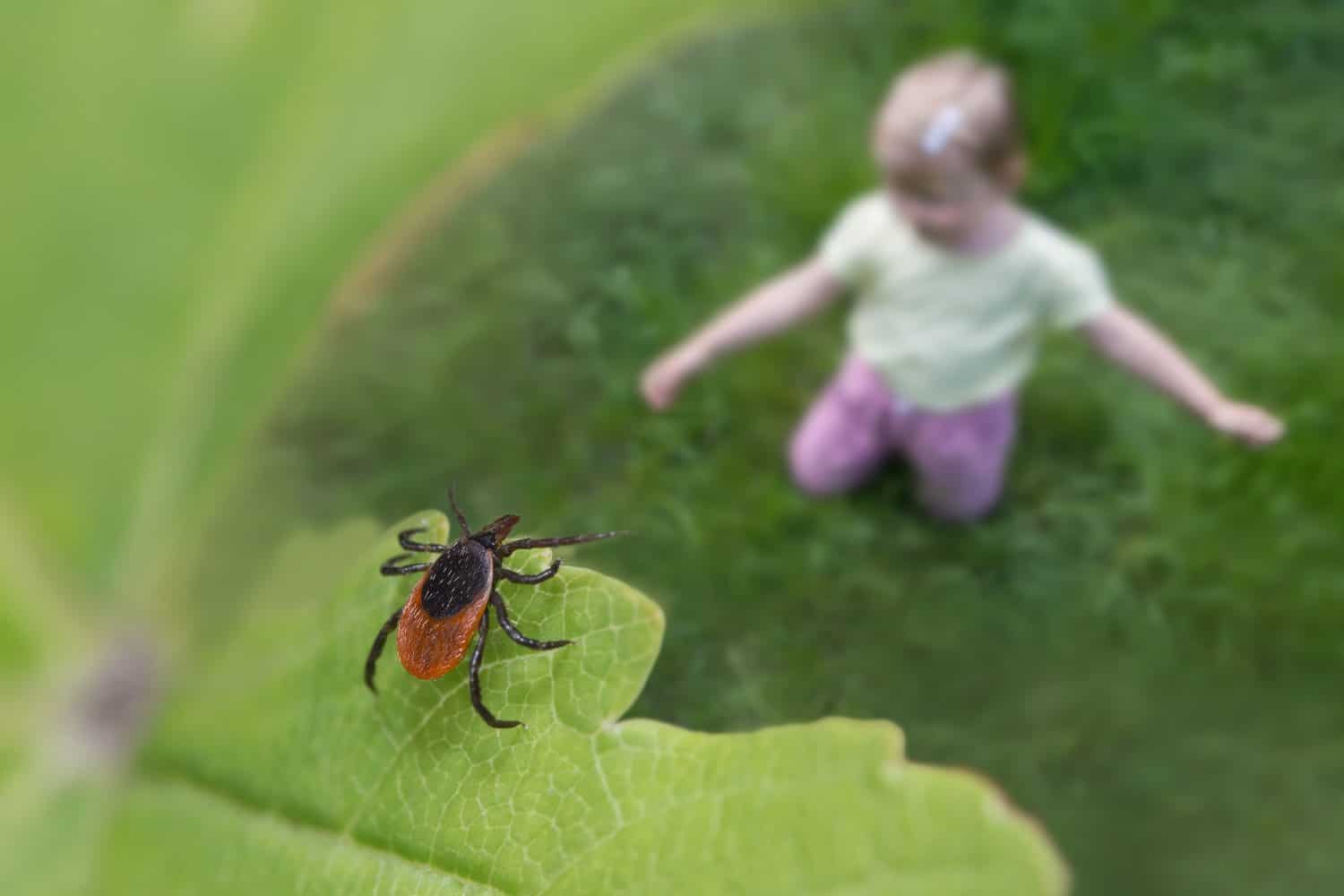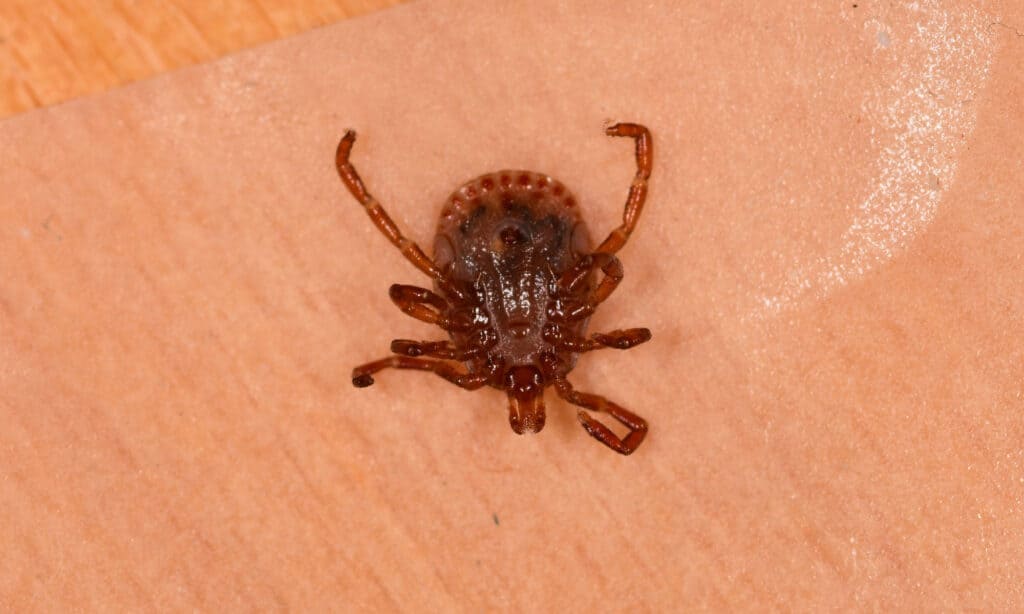Are you planning to take a family hike or do some camping outdoors with your children this summer? Then it’s important for you to know how to do a tick check on both yourself and your children. According to the Centers for Disease Control and Prevention, the number of tick-borne diseases is on the rise. When tick populations are high in the spring, summer, and early fall, it is important to take precautions. This means that if your family is going to be outside, you need to take precautions to ensure the safety of your family and your pets before, during, and after your visit. Your risk of contracting a tick-borne disease is significantly reduced if you remove ticks promptly after discovering them.
However, do you know how to detect ticks on yourself? Those of you who don't, or those who want to refresh your knowledge on how to check for them properly, should read on. Throughout this article, we'll cover how to check for ticks and how to remove them safely.
How To Do a Tick Check

©Evgeniyqw/Shutterstock.com
Due to their small size, ticks are easily overlooked, especially as larvae. Among their habitats, ticks live in grassy patches, leaf piles, and low-growing shrubs. As you come into contact with ticks, they may crawl onto your clothes or body and bite or feed on the exposed skin. In the United States, there are at least 13 diseases transmitted to humans via tick bites. That’s why it is important to know how to check for them.
Whenever you are in an area where ticks may be present, follow these steps:
1. Take a quick look at your clothes and body.
This may seem obvious, but it’s not uncommon for many of us to forget to give ourselves a one-over, especially if we’re excited to get back on our trail or to finally head back home after a long and exhausting hike. Once you've left an area prone to ticks, do a quick scan of yourself, your children, and your pets. While self-examining, use a buddy to monitor areas you can't see. Take a look at your clothes, feel your hair, and feel the back of your neck. Be sure to take your shoes off, because they often have lots of spaces that a tick can hide in.
2. Do a more thorough check.
After being in an area likely to have ticks, you should stop and take a closer look within 1-2 hours. During this step, it is best to remove all your clothing so that you can examine your body and clothes more closely. If you take a shower, you can also use a full-length mirror or a hand-held mirror to check your entire body for ticks as you wash. Remember that ticks like to hide in warm places or in skin folds. During tick checking, pay close attention to places like your underarms or behind your ears. They could even be hiding in your belly button, behind your knees, and sometimes even in between your legs and around your waist. If you find a tick on your body or on your children, immediately remove it using the step-by-step instructions below.
3. Change and check your clothes.
While you are taking a good look in the mirror for ticks, they could be making themselves comfortable in your clothing. Ensure that none of these clothes are put back on after you have removed them. Instead, toss them in a dryer and run it on high heat. This will kill any ticks that have made a home out of your clothes. However, do not throw them in the washer first, as they are able to survive the water. If you happen to find any ticks on your clothes, be sure to remove them using duct or packing tape. Ticks, specifically very small larvae, can also be effectively removed from clothing using an adhesive lint roller.
How To Remove a Tick Properly

©KPixMining/Shutterstock.com
After learning how to properly check your body for ticks, it's time to discuss how to remove one if you find it. Ticks should be removed as soon as possible if they are found attached to your skin. Although there are a variety of tools for removing ticks available, there is no substitute for fine-tipped tweezers.
It is important to follow the steps below in order to remove a tick properly:
- Grasp the tick’s mouthparts against the skin using pointed tweezers.
- Maintain steady, even pressure as you pull upward. It is very important to be patient during this step. This is because the mouth parts of the tick can break off if you twist or jerk the tick. In the event that this occurs, don't panic. Tweezers can be used to remove the mouth parts if this occurs. Leave the mouth alone if you cannot remove it easily with tweezers. Since the tick's infective body is no longer attached to its mouthparts, it cannot transmit disease anymore. If necessary, seek medical attention.
- Rubbing alcohol or soap and water should be used to clean the bite spot and your hands after removing the tick.
- Don't squash the tick after you've removed it. Alternatively, you can put the tick in rubbing alcohol, flush it down the toilet, or wrap it tightly in tape to get rid of it. Alternatively, you can place it in a sealed container or bag and dispose of it that way.
What Illnesses Do Ticks Spread?

©iStock.com/cturtletrax
Disease is spread by ticks when they feed off the blood of their hosts and pass bacteria, viruses, and parasites along. In most cases, these illnesses are characterized by symptoms similar to the flu, including chills, fever, headaches, and muscle aches. There are, however, a few diseases spread by ticks that should be known.
Some of the most common illnesses spread by ticks include:
Lyme Disease
Both humans and animals can be affected by Lyme disease, caused by Borrelia burgdorferi. In the United States, this disease is the most commonly reported tickborne disease. As of 2013, it was discovered that a closely related bacteria, Borrelia mayonii, can cause a similar illness to Lyme disease as well. There may be early signs and symptoms of this disease, such as a bull's-eye rash, flu-like symptoms, or both. In the case that you do not treat Lyme disease, it can result in severe problems, such as problems with the brain and the nervous system, heart issues, and joint pains.
Rocky Mountain Spotted Fever
This disease can be spread by a bite from an American dog tick. Nevertheless, it can also be acquired from Rocky Mountain wood ticks and brown dog ticks. The majority of cases occur in the Southeast, despite the name. A bad headache and high fever are usually the first symptoms. As a result of this reaction, most people develop a rash that starts on their ankles and wrists and spreads outward from there. Antibiotics are prescribed by doctors as a treatment for this disease.
Tularemia
In the United States, tick bites can cause tularemia, a potentially fatal illness. Dog ticks, wood ticks, or lone star ticks can transmit Francisella tularensis, a bacterium that causes tularemia. Symptoms include a high fever and an open, painful sore after being bitten. Despite its life-threatening nature, antibiotics can be used to treat it.
Babesiosis
Babesiosis occurs when parasites are introduced into your red blood cells by black-legged ticks. Those with weak immune systems, those over the age of 65, and those who have had their spleen removed are at risk of having bad reactions to this disease due to their weakened immune systems.
The image featured at the top of this post is ©KPixMining/Shutterstock.com.